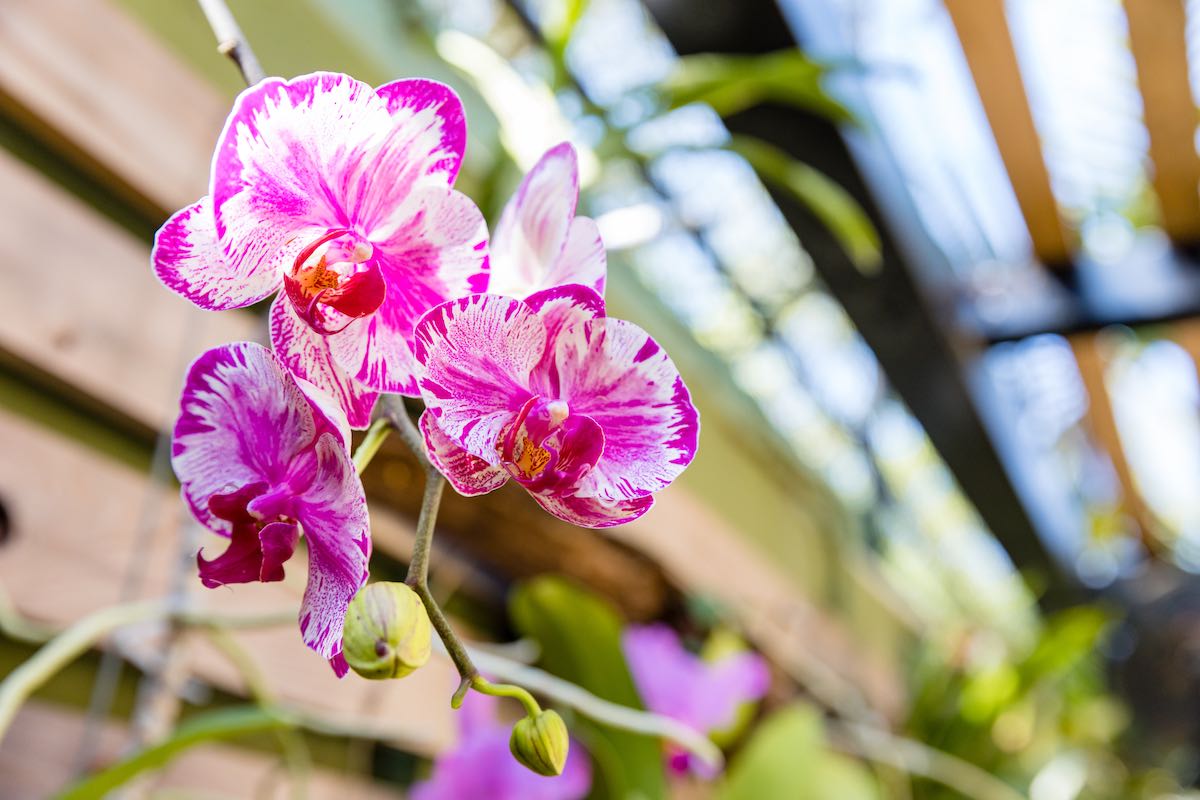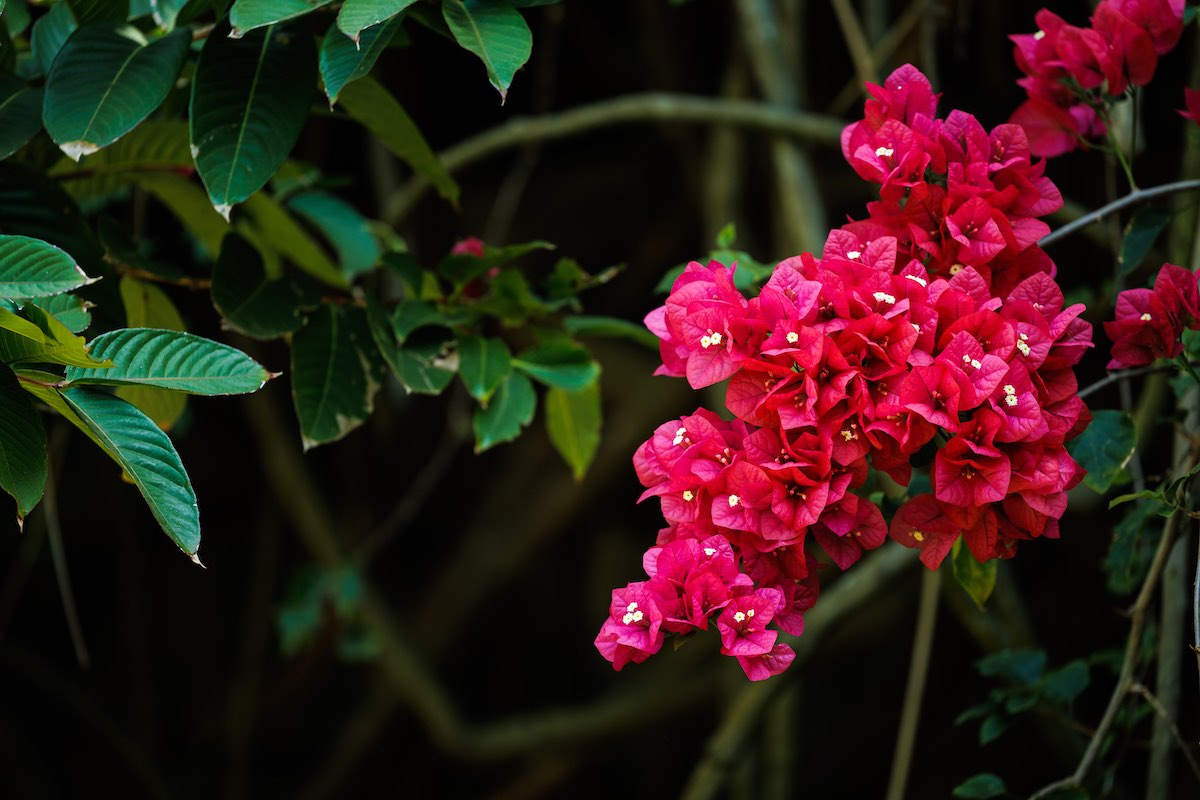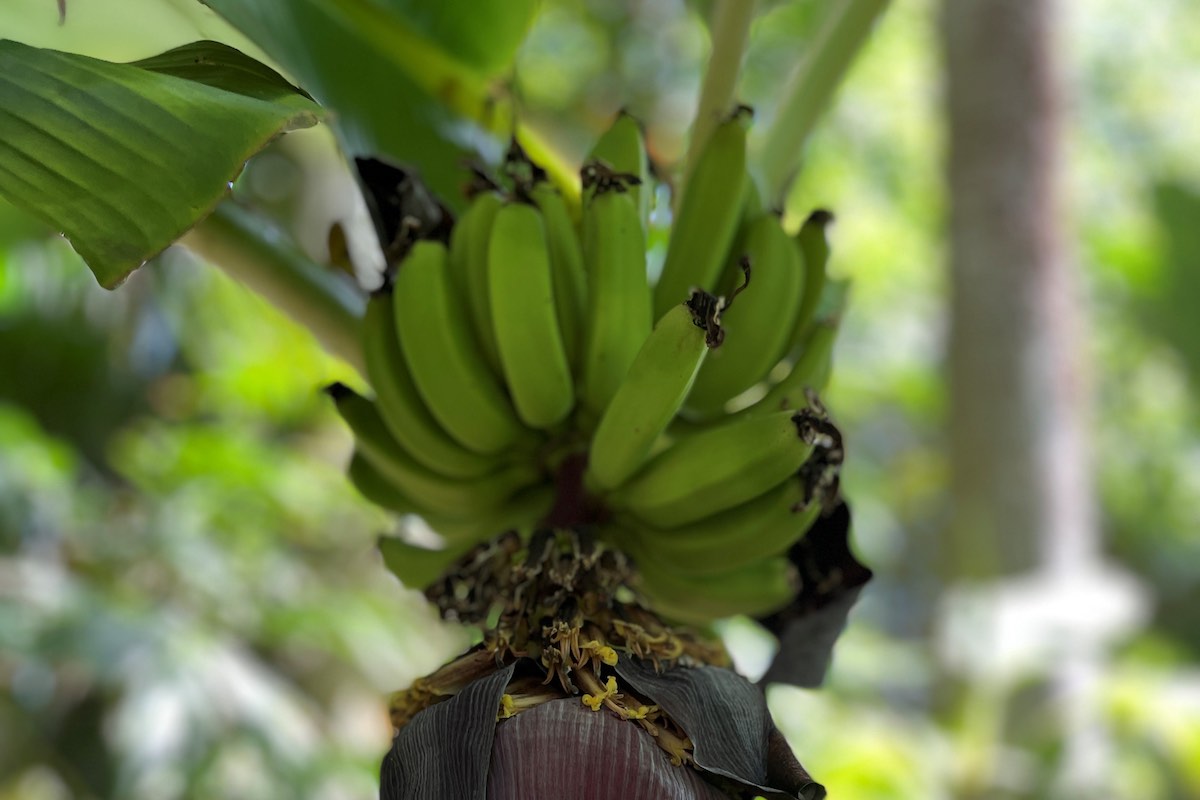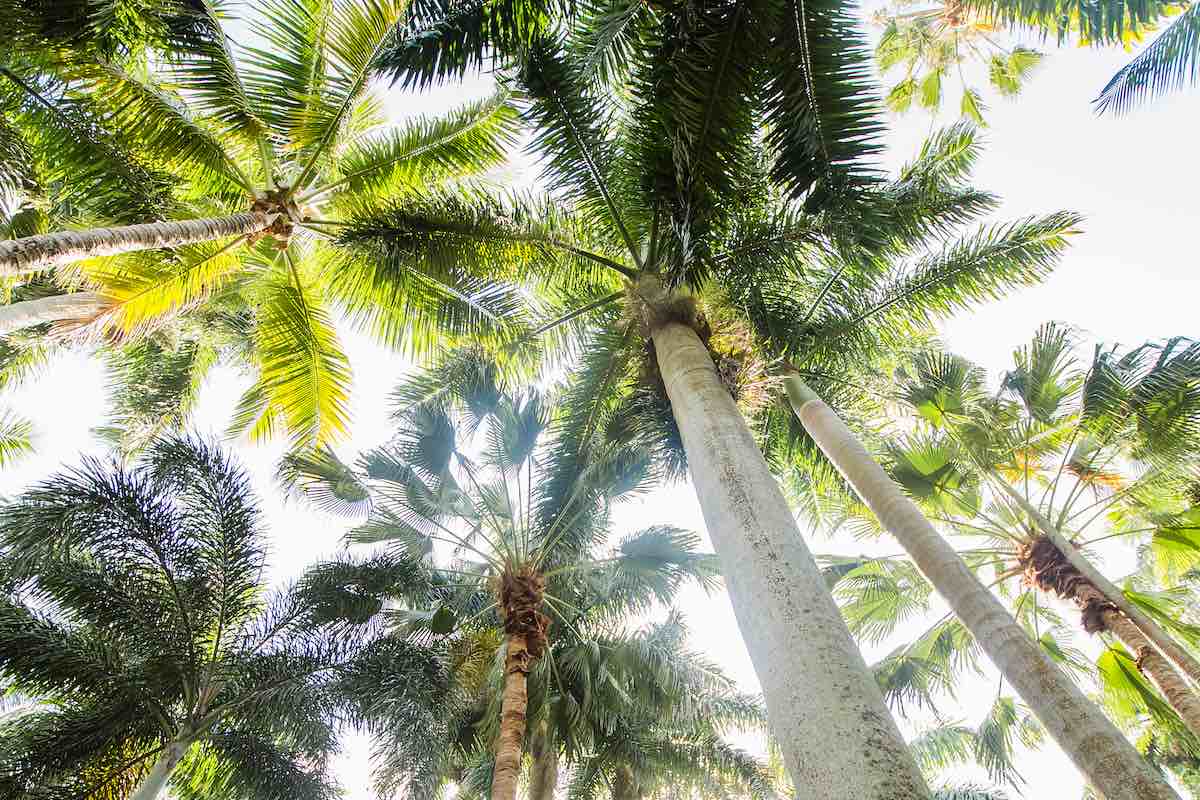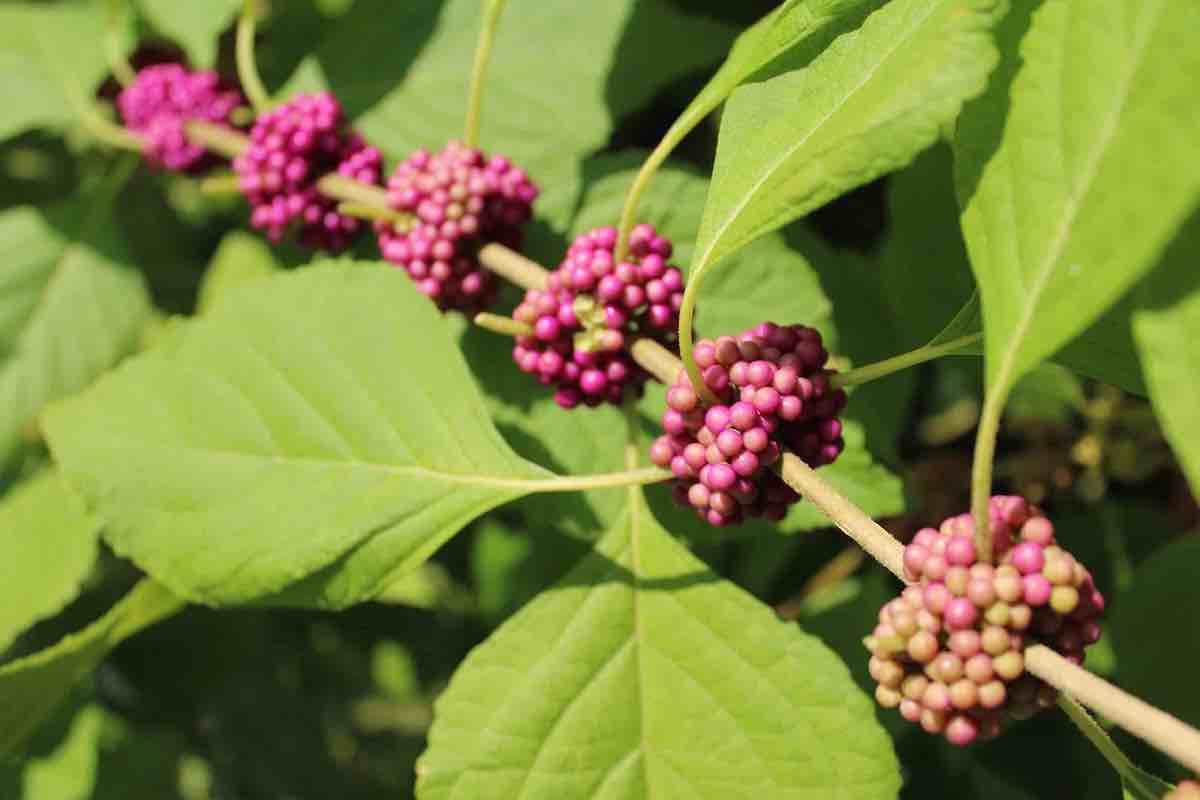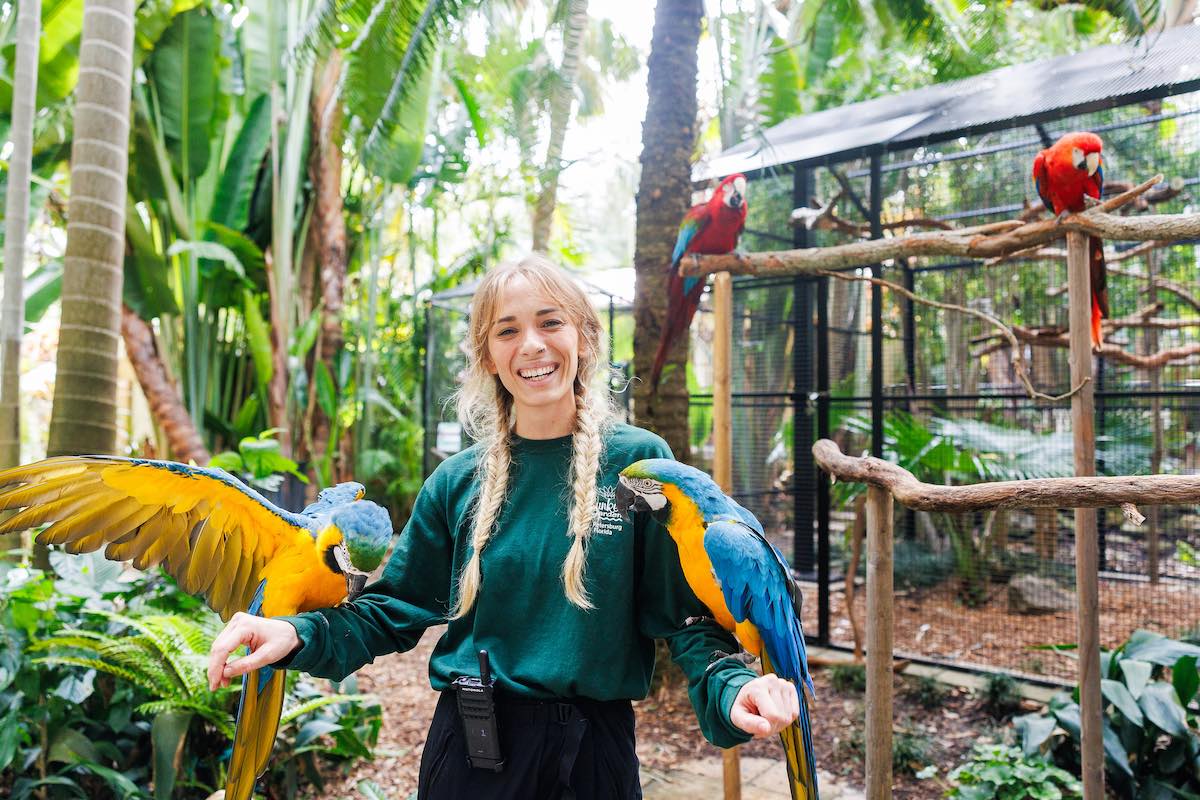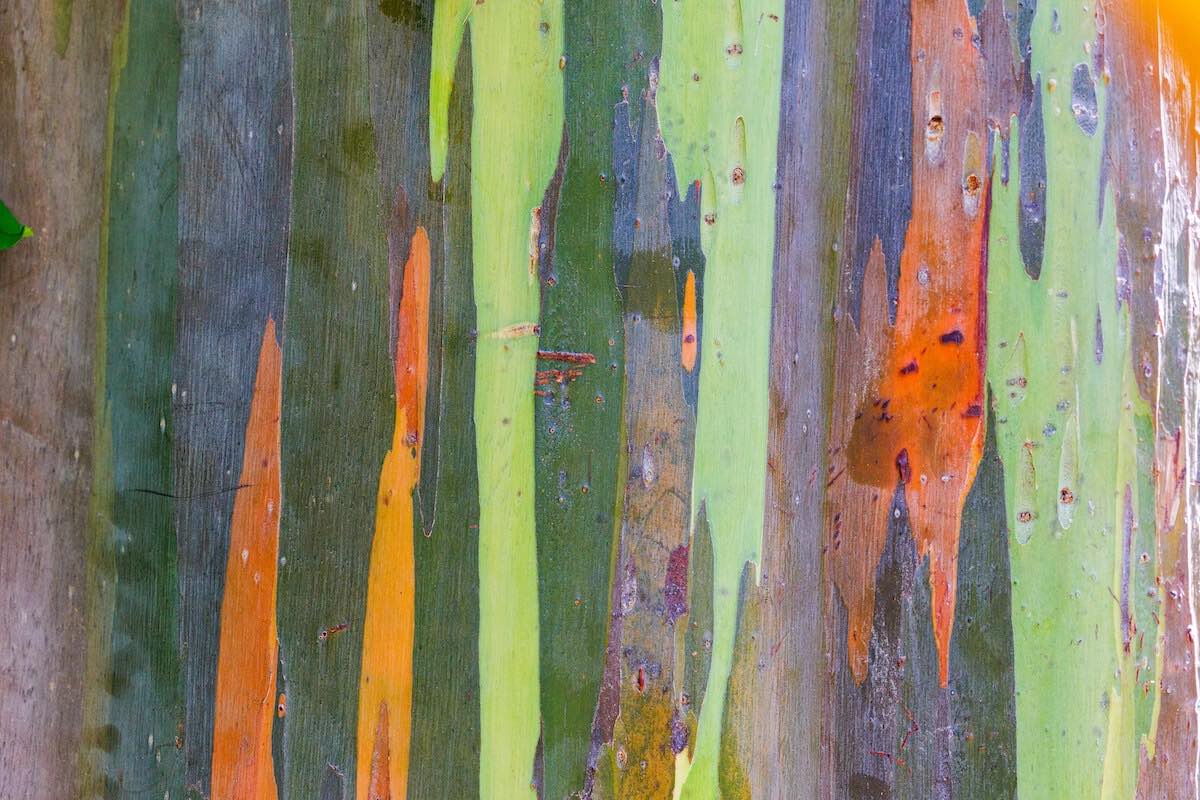
Rainbow Eucalyptus
Eucalyptus deglupta
This colorful, captivating tree is one of our most-loved specimens and towers over the other mature tropical foliage. It is native to the Phillipines, Indonesia, and Papua New Guinea. This extremely fast grower can climb up to 125 ft tall, with peeling bark that reveals the gorgeous colors underneath. The hues change throughout the year, as rain causes swelling that makes the bark peel away, exposing shades of pink, orange, blue, purple, and many more. Rainbow eucalyptus requires copious amounts of irrigation, which is why we placed it in the lowest area of Sunken Gardens. Like most fast-growing trees, it is not wind resistant, thus we have placed it far from any structures in the Gardens.
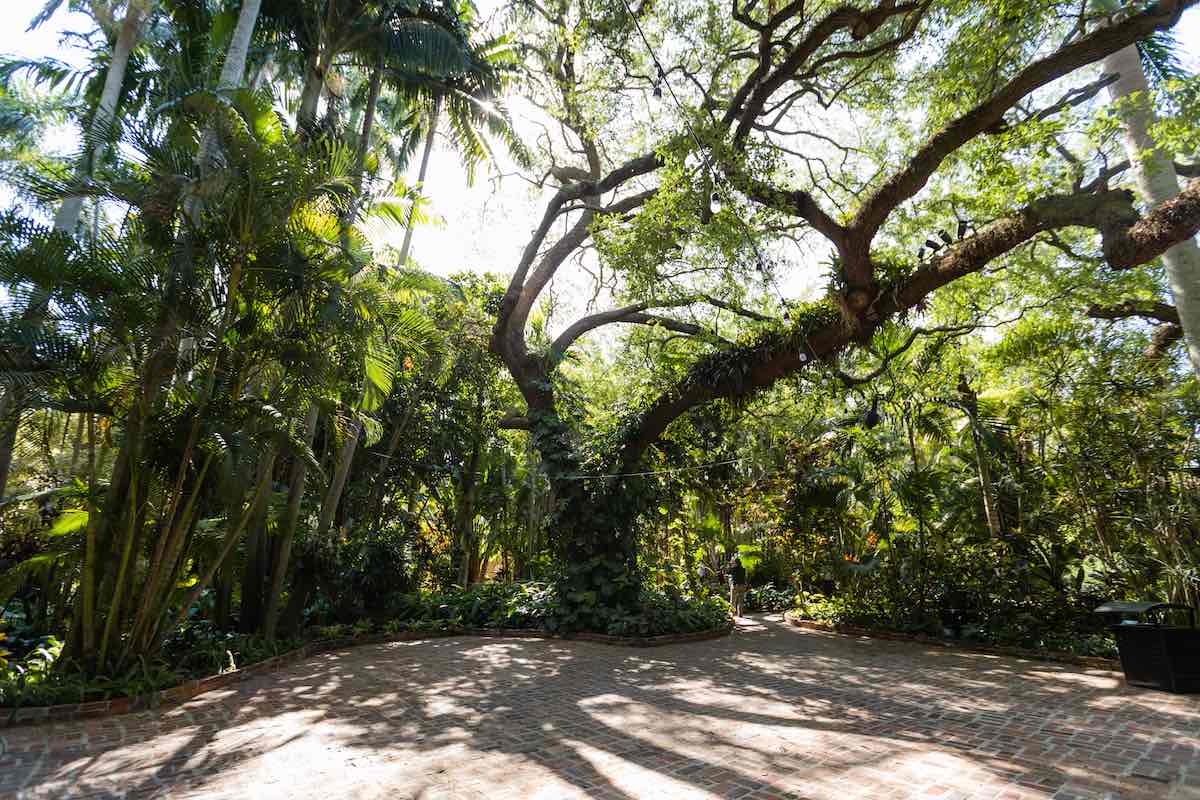
Southern Live Oak
Quercus virginiana
In 2019, arborists estimated the southern live oak in the Oak Pavilion to be approximately 150 years old with a limb span of over 150 feet. In 1977, the National Arborist Association recognized this historic specimen, commending those who had the vision and foresight to preserve it. This oak shaded the homestead of our founding family after they built it in 1931.
Southern live oaks are native to Florida and provide more food and habitat for birds and pollinators than most other trees. As a “keystone” species on which other species in an ecosystem largely depend, it is one of the most beneficial and impactful trees one can grow.

